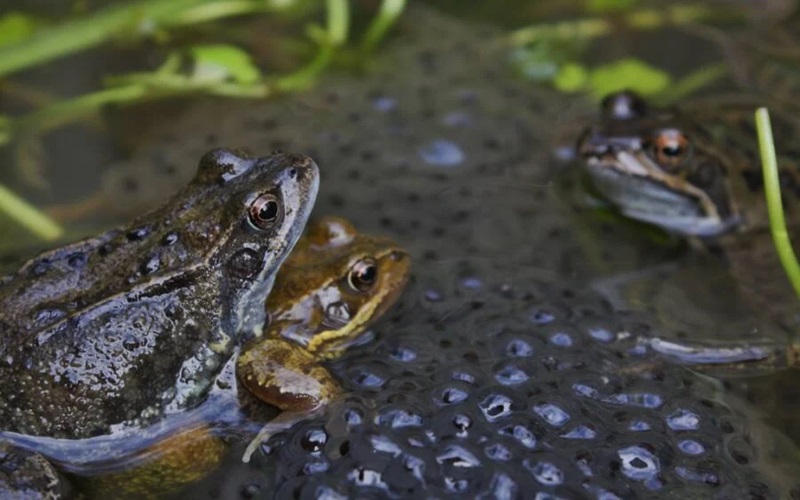In order to reach out to females, male European frogs can be aggressive, harassing, or even force them into having a baby. In both species, these behaviors can affect reproduction and could even prove fatal for females. There was a belief that women were unresponsive and ineffective in the presence of male coercion; however, a study that was published in the journal Science by the Royal Society Open Science reveals that women employ a range of strategies to avoid confrontation in the face of men whom they don’t like.
Conflict between partners can arise when the sexual preferences of both partners or ways of thinking diverge and are not compatible. The proportion of males and females is generally low, with a significant majority of males in the brief period of spring breeding that lasts two weeks during spring. This is why a lot of individuals begin fighting for women. In the words of Inigo Martinez-Solano, a researcher from the Department of Biodiversity of the National Museum of Natural Sciences, “they end up losing due to the fact that they often drown because of the aggregation of up to eight frogs that are throwing their bodies at them.” Mating balls is the name for these groups.
48 male and common frogs, ranging from 96 females to 48 males, were taken during their breeding period by research scientist Carolin Dittrich, who is from the Konrad Lorenz Ethology Institute in Vienna. Inside the box, which was filled with 5 centimeters of water, he set males and females with different dimensions next to each other. Then he allowed the frogs to move for about an hour while he tracked their movement. While males were unable to detect the indirect response, the researcher noticed females moved their bodies to stay away from them.
The technique of avoidance that involves a female attempting to rotate on her own axis in order to escape a male’s grasp is the most popular of the avoidance strategies. Protesting is another option. Dittrich describes the motion as “deep but low-frequency” grinding that he believes bears a resemblance to the noises released by males during fights. In addition, they could produce the sound of chirrido, which is higher in frequency.
The last most shocking and “most shocking” behavior was that of tonic inactivity, which is a mental state that’s connected with death. Females are rigidly extending their arms and legs away from their bodies, making them appear dead for a brief amount of time. A man is spotted dragging the female subject, still in a static posture, during one video that was studied. After letting the drag off, the female remains in her position until the man shifts direction, after which she swims away. This pattern is noticeable.
It was once thought that mating was linked to tonic inactivity as a defense against predators. The study reveals that mating, on the contrary, was never seen in spiders or libels and was performed in the last alternative. The methods, which are often used in tandem, proved successful. Just one female out of 54 captured by a male could escape. Smaller females had a better chance of success because they were able to more easily escape capture by males. Dittrich believes that, even though the study was conducted in a laboratory, female frogs behave the same when they are in nature.
The decision to not marry the woman of your dreams can be a matter of personal taste. Most of the time, instead of picking the first guy to hold on to, they decide to marry the one with the strongest voice or one who is bigger. When they are disqualified, some men and women sneak around and try again, but this does not always result in a conception. They start planning their escape in case the female is not willing to accept it. “We have seen cases where females carry males around on their shoulders for weeks or days, waiting for a bigger male or one they are comfortable with,” Martinez-Solano says. Females aren’t more selective than males, however. They are able to be captured randomly and don’t show an affinity for bigger female bodies. The short time between breeding season and reproduction contributes to their aggressive nature.
Previous research regarding male reproductive behaviors According to Dittrich, this did not lead to the discovery of these tactics. “But it’s something that is changing slowly and incorporating female perspectives, too,” the scientist observes. Martinez states that studies like the one conducted by Dittrich are advantageous as they help to improve understanding of amphibian biology, about which “there is a great deal of apathy.” A better understanding of these animals will allow us to devise efficient conservation strategies and better understand the amphibian population structure.
The behavior observed The researcher stresses that neither the species’ capacity to reproduce nor its existence are at risk from the behavior observed. Contrarily, climate change does. Although it is a widely distributed species, the number of its inhabitants is decreasing. People who can adapt to changing conditions quicker or more efficiently can survive. Dittrich has his doctoral advisor, Mark Oliver Rodel, say, “There is nothing frogs can’t accomplish.”




